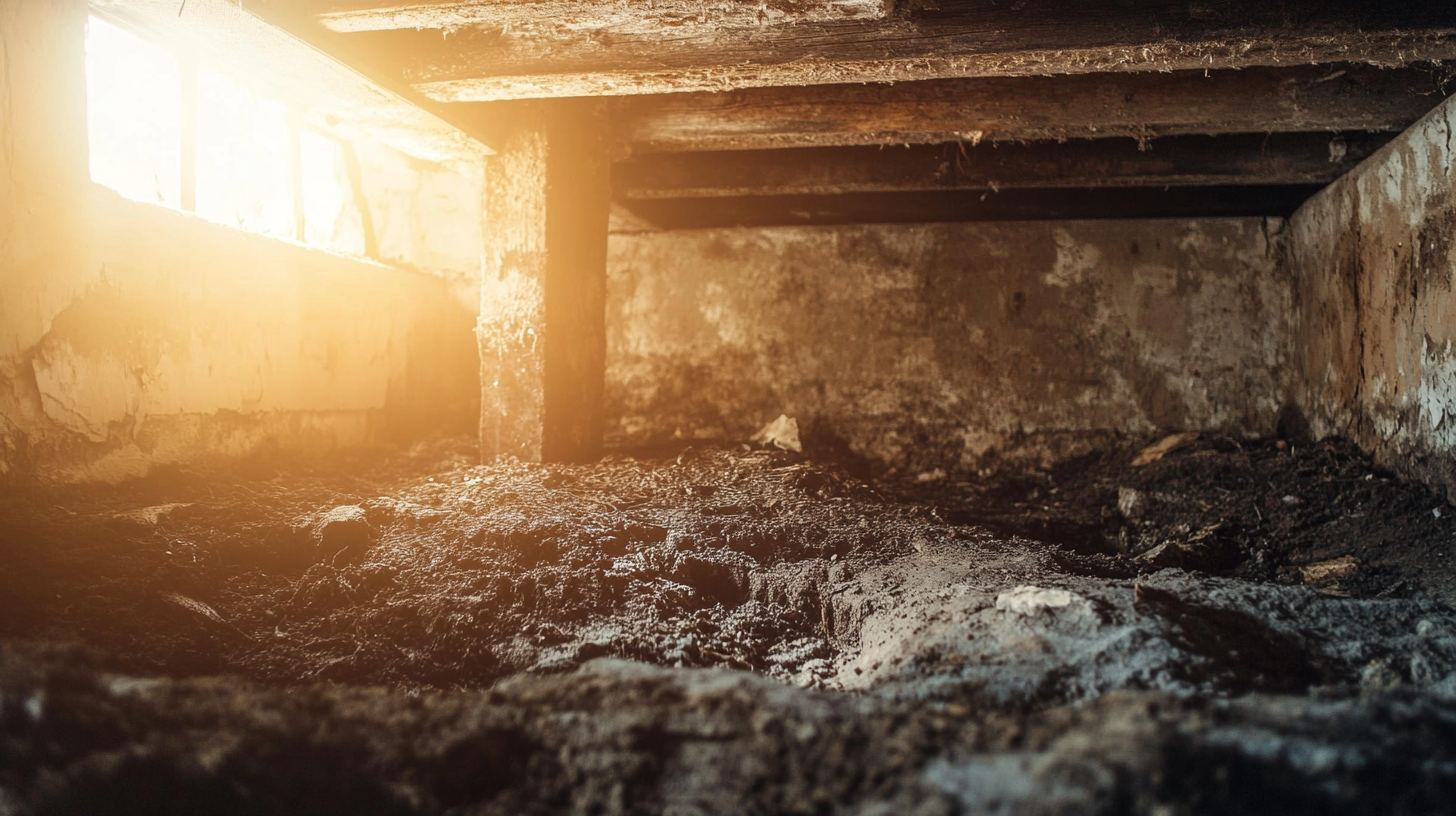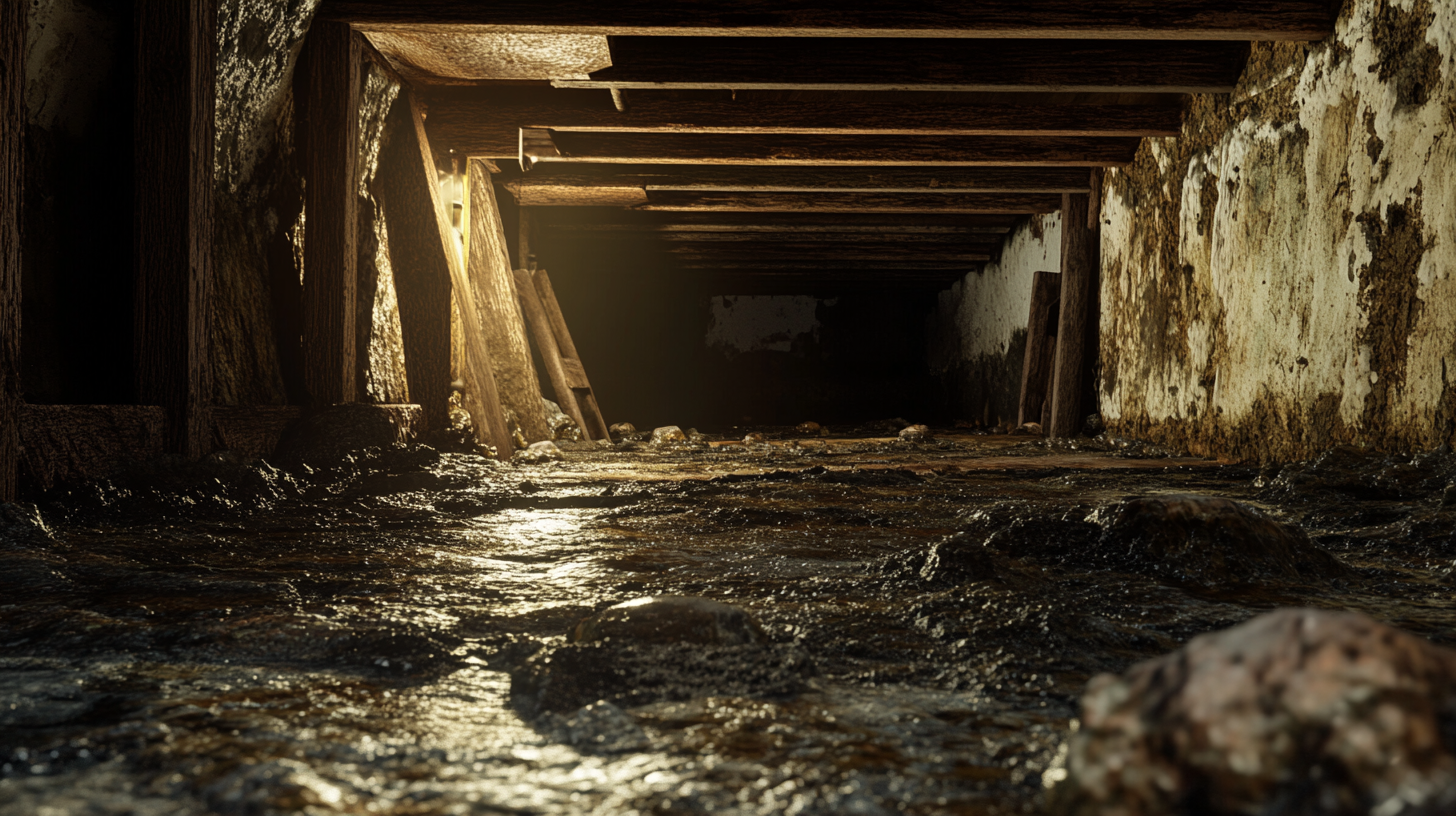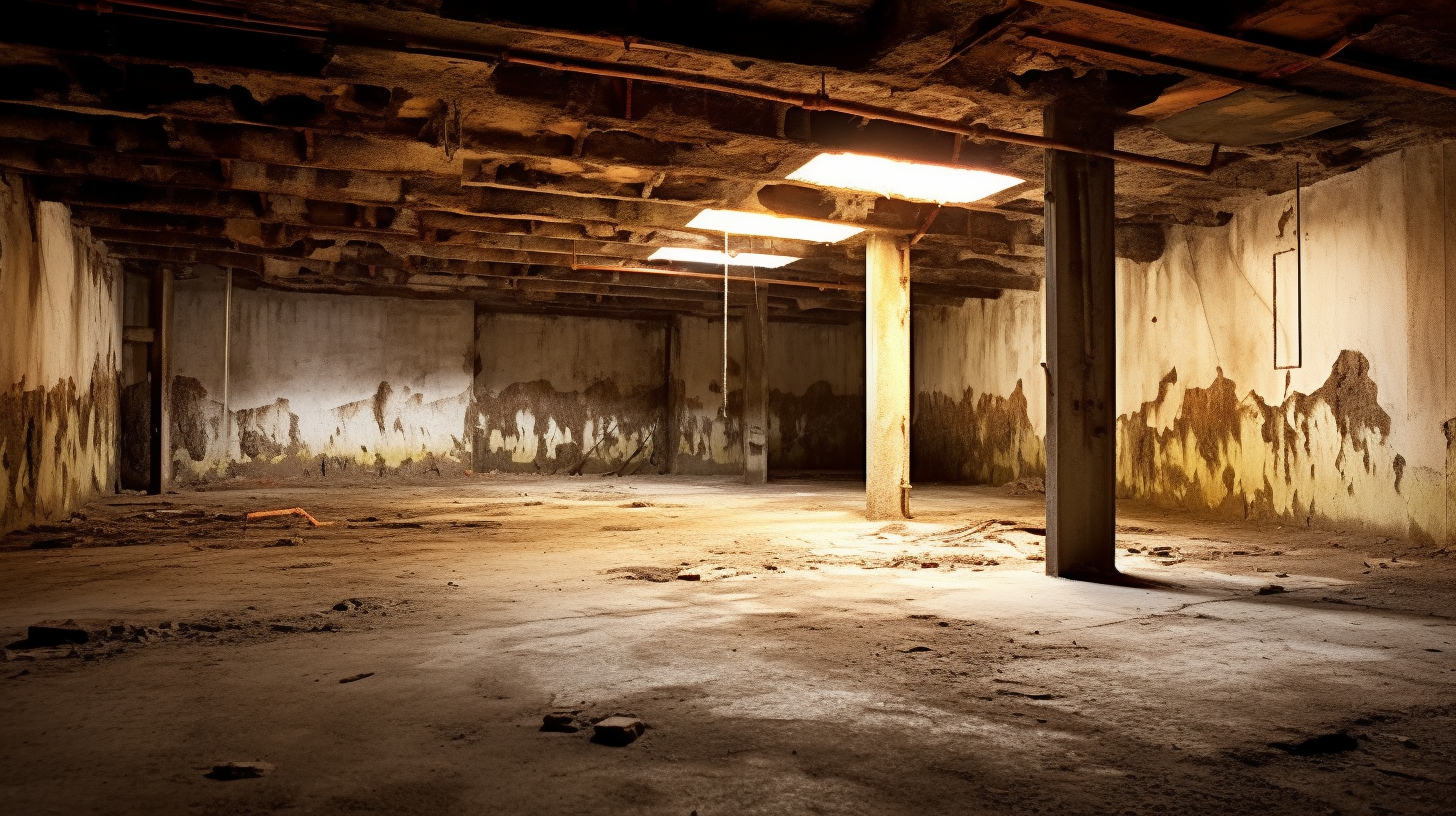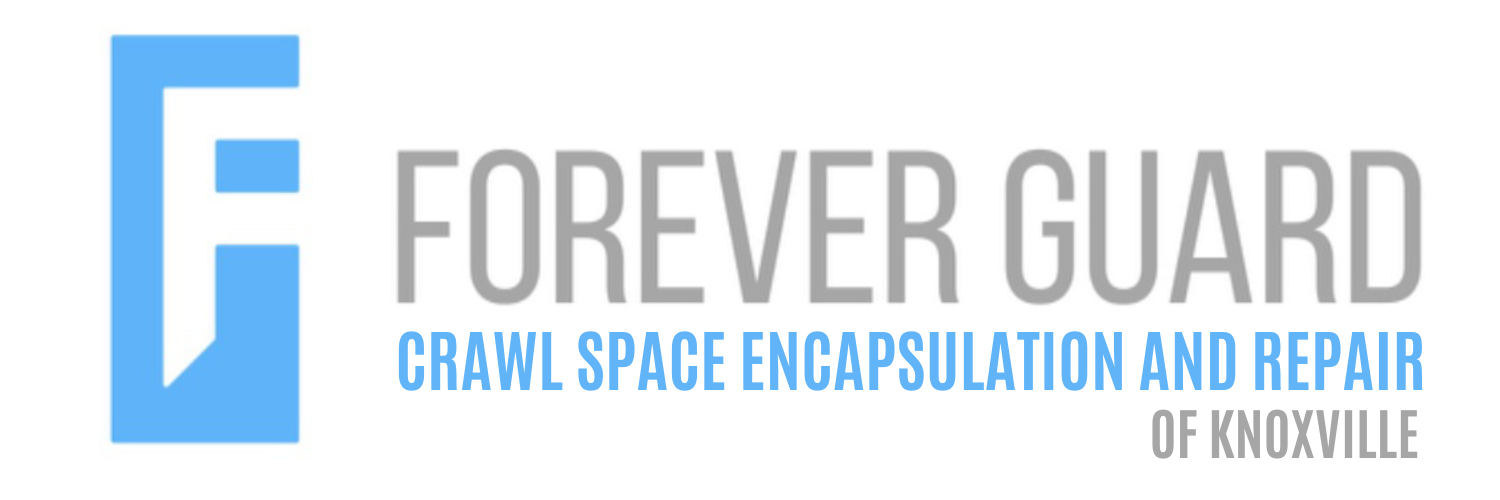Now IS THe Time To...

Crawl Space Services In Knoxville, TN
Stetson Howard: 865-432-6743
CRAWL SPACE ENCAPSULATION, REPAIR, WATERPROOFING & MOLD REMOVAL
No-Obligation, Free Inspections
No-Obligation Free Estimates
We Warranty All of Our Work
100% Satisfaction Guaranteed
Retaining walls play a crucial role in both construction and landscaping, providing essential support for soil and managing terrain in areas with steep slopes or uneven ground. By preventing soil erosion and controlling water runoff, retaining walls help stabilize land, making it safer for building projects and enhancing the usability of outdoor spaces. Whether in residential landscaping or large-scale commercial developments, retaining walls ensure structural integrity and offer aesthetic benefits by creating tiered gardens or leveled walkways.
Beyond their functional role, retaining walls can be designed to complement the overall aesthetic of a space, integrating seamlessly with landscaping features like plants, patios, and pathways.
With the right materials and construction techniques, they not only protect the environment but also contribute to the visual appeal of the property. In this blog, we’ll explore why retaining walls are indispensable in modern construction and how they add value to both residential and commercial projects.
Why Retaining Walls Need Effective Waterproofing
Retaining walls serve a vital function in construction and landscaping, providing structural support and preventing soil erosion. However, due to their constant exposure to moisture, retaining walls are at significant risk of water damage if not properly waterproofed. Effective waterproofing is essential to maintaining the long-term durability and integrity of these structures. Below, we explore the critical reasons why retaining walls require robust waterproofing solutions.
Constant Exposure to Moisture
Groundwater Seepage: Retaining walls are often in direct contact with soil that retains moisture, making them susceptible to water penetration over time. Groundwater seepage can lead to gradual weakening of the wall's structure, especially if the wall is not equipped with proper drainage or waterproofing systems. Over time, this can result in cracks and deterioration that compromise the wall's stability.
Rainwater and Surface Runoff: In addition to groundwater, retaining walls must also manage surface water from rainfall or irrigation systems. Without proper waterproofing and drainage, rainwater and runoff can accumulate behind the wall, increasing the risk of water infiltration. Over time, this can lead to significant damage, including cracking, erosion, and loss of structural integrity.
Hydrostatic Pressure and Its Impact
Definition: Hydrostatic pressure refers to the force exerted by water trapped in the soil behind the retaining wall. As the water builds up, this pressure increases and places additional stress on the wall, which can lead to significant structural issues if not properly managed.
Consequences:
- Cracks, leaks, and structural failure: Excessive hydrostatic pressure can cause the wall to crack or develop leaks, which, if left untreated, can lead to partial or complete structural failure. This not only compromises the wall’s ability to retain soil but can also pose safety hazards.
- Efflorescence: Water trapped behind the wall can cause efflorescence, where salts are drawn to the surface, resulting in unsightly white stains. Over time, this can weaken the wall material, further increasing the risk of damage and reducing the aesthetic appeal of the structure.
Long-Term Durability and Structural Integrity
Preventing Water Damage: Proper waterproofing is key to preventing moisture from penetrating the retaining wall. Without effective waterproofing, moisture can enter the wall’s structure, leading to freeze-thaw cycles in colder climates. This repeated expansion and contraction of water within the wall material can cause cracking, spalling, and degradation, particularly in concrete and masonry structures.
Protecting Reinforcement Materials: Many retaining walls include steel reinforcement to enhance their strength and durability. However, if water is allowed to infiltrate the wall, it can cause the reinforcing steel to corrode. Corrosion weakens the structural integrity of the wall, leading to premature failure. By applying effective waterproofing solutions, the reinforcing materials are protected from water exposure, extending the lifespan of the retaining wall.
Key Factors to Consider When Choosing Waterproofing Materials for Retaining Walls
When selecting the right waterproofing materials for retaining walls, it’s essential to consider several factors that can impact the effectiveness and longevity of the waterproofing system. These include the specific environmental conditions, soil characteristics, and the type of materials used in the construction of the wall. Below, we outline the key factors to consider when choosing waterproofing solutions for retaining walls.
Soil Conditions and Water Table
High vs. Low Water Table: The level of the water table in the surrounding area is a critical consideration. In regions with a high water table or where significant groundwater flow exists, retaining walls are at greater risk of water infiltration. These conditions require more robust waterproofing systems, such as multi-layered membranes or self-sealing waterproofing materials, which provide a stronger barrier against persistent water pressure. Conversely, areas with a low water table may not require such intensive waterproofing solutions, although drainage systems are still crucial.
Soil Type: The type of soil surrounding the retaining wall also plays a major role in determining the waterproofing requirements. Clay-heavy soils retain more moisture than sandy or gravelly soils, increasing the risk of water buildup behind the wall. Waterproofing solutions in these areas must account for the slow drainage of clay soils, using highly durable, moisture-resistant materials to prevent water infiltration. In contrast, sandy soils allow for better drainage, which may reduce the intensity of waterproofing needed but still requires proper protection against moisture.
Wall Material
Concrete Walls: Concrete retaining walls require waterproofing materials that bond well with concrete surfaces and can handle potential cracks caused by structural movement or environmental stress. Elastomeric membranes are an excellent choice for concrete, as they offer flexibility and the ability to bridge small cracks, ensuring long-lasting protection against water penetration.
Masonry Walls: Masonry walls, often constructed with bricks or stone, have multiple joints and variable surfaces that need specialized waterproofing solutions. The waterproofing material must effectively seal these joints while also providing consistent coverage across the surface. Cementitious coatings or bituminous membranes are commonly used for masonry walls due to their ability to adhere well to uneven surfaces and fill in gaps between masonry units.
Wooden or Timber Walls: Wooden or timber retaining walls are particularly vulnerable to moisture, which can lead to rot and decay if not properly protected. Waterproofing materials used on timber walls must be moisture-resistant and able to provide a barrier against both water and moisture vapor. Products like wood preservatives, moisture barriers, and waterproof coatings are essential to extending the lifespan of wooden retaining walls by preventing rot and protecting against water damage.
Exposure to Environmental Conditions
Freeze-Thaw Cycles: In regions with cold climates, retaining walls are subjected to freeze-thaw cycles, where water trapped within the structure freezes and expands, then thaws and contracts. This cycle can cause significant damage, including cracking and spalling of the wall material. Waterproofing materials in these environments must be able to withstand freezing temperatures and repeated expansion and contraction without losing their integrity. Flexible membranes or cold-applied waterproofing systems are particularly effective in preventing freeze-thaw damage.
UV Resistance: For retaining walls exposed to direct sunlight, it’s important to use waterproofing materials that are UV-resistant to prevent degradation over time. Prolonged exposure to UV rays can weaken some waterproofing materials, causing them to become brittle or deteriorate. Using UV-stable waterproof coatings or membranes ensures that the waterproofing system remains effective even under continuous sun exposure, especially in areas with intense sunlight.
Top Waterproofing Materials for Retaining Walls
Choosing the right waterproofing material for retaining walls is crucial to ensure long-term durability and protection against water damage. Various materials are available, each with its own advantages and ideal applications based on environmental factors and the type of wall construction. Below, we explore the top waterproofing materials used for retaining walls and their key benefits.
Liquid-Applied Membranes
Description: Liquid-applied membranes are waterproofing solutions applied with a roller, brush, or spray that cure into a seamless, flexible membrane. Once applied, these membranes form a continuous protective layer that is highly effective at preventing water infiltration.
Key Benefits:
- Seamless application: Since the membrane is applied as a liquid, it provides a smooth, joint-free surface, significantly reducing the risk of leaks and water penetration through cracks or seams.
- Highly flexible: Liquid-applied membranes can adapt to wall movement, settling, or slight shifts in the structure, maintaining their integrity even if minor cracks develop in the wall.
- Excellent adhesion: These membranes bond well to concrete, masonry, and other wall surfaces, ensuring long-term protection.
Ideal Applications: Liquid-applied membranes are best suited for vertical surfaces and retaining walls exposed to varying soil conditions and moisture levels, particularly in areas prone to movement or cracking.
Sheet Membranes
Description: Sheet membranes are pre-formed waterproofing sheets made from materials such as PVC, HDPE (high-density polyethylene), or rubberized asphalt. They are applied directly to the surface of the retaining wall to create a strong, durable waterproof barrier.
Key Benefits:
- Consistent thickness: Sheet membranes offer a uniform application, ensuring that the waterproof barrier maintains consistent protection against water infiltration.
- Durable and UV resistant: These materials are highly resistant to environmental wear and UV exposure, making them ideal for outdoor applications where long-term durability is essential.
- Effective against hydrostatic pressure: Sheet membranes are particularly effective at resisting water pressure, protecting the wall from moisture buildup and hydrostatic pressure that could otherwise cause structural issues.
Ideal Applications: Sheet membranes are suitable for large retaining walls, especially in areas with high groundwater levels or significant water pressure, providing a strong defense against moisture.
Cementitious Waterproofing Coatings
Description: Cementitious waterproofing is a cement-based coating applied to the surface of the wall to form a durable, water-resistant barrier. This type of waterproofing is often used for both interior (negative-side) and exterior (positive-side) applications.
Key Benefits:
- Easy to apply: Cementitious coatings can be applied with a brush or trowel, making them a straightforward option for waterproofing large surfaces.
- Durable and water-resistant: These coatings are highly resistant to constant moisture exposure, making them suitable for retaining walls that are regularly in contact with water.
- Versatile application: Cementitious coatings are effective for both positive-side (exterior) and negative-side (interior) waterproofing, providing flexible options depending on the project’s requirements.
Ideal Applications: Cementitious waterproofing is ideal for concrete or masonry retaining walls in areas with moderate water exposure, offering durable protection against moisture.
Bentonite Clay Waterproofing
Description: Bentonite clay waterproofing is a natural, clay-based material that expands when exposed to moisture, forming an impenetrable waterproof barrier. It is commonly used in below-grade applications due to its ability to seal cracks and voids.
Key Benefits:
- Self-sealing properties: Bentonite clay naturally expands when wet, filling any cracks or gaps in the wall and creating a continuous waterproof barrier.
- Eco-friendly: As a natural material, bentonite clay is a sustainable and environmentally friendly option for waterproofing.
- Long-lasting and low-maintenance: Bentonite remains effective even after repeated exposure to moisture, making it a long-lasting and low-maintenance solution for high-moisture environments.
Ideal Applications: Bentonite clay is best for retaining walls in high groundwater areas and is particularly effective in below-grade applications, such as basement walls or subgrade retaining walls.
Waterproofing Paints and Sealants
Description: Waterproofing paints and sealants are water-repellent coatings applied to the surface of retaining walls to create a protective barrier against moisture. They are typically used in areas with light moisture exposure.
Key Benefits:
- Easy to apply: Waterproofing paints and sealants are simple to apply, making them ideal for DIY projects or small-scale waterproofing jobs.
- Cost-effective solution: For projects with light moisture exposure, these materials offer an affordable waterproofing option.
- Surface protection: These coatings provide a protective layer that helps prevent rainwater and minor water pressure from seeping into the wall.
Ideal Applications: Waterproofing paints and sealants are suitable for retaining walls in low-moisture areas or can be used as additional protection on top of other waterproofing systems, particularly for walls with minimal water exposure.
Drainage Systems and Their Role in Retaining Wall Waterproofing
Proper drainage is a critical component of retaining wall waterproofing. Without effective drainage solutions, water can accumulate behind the wall, leading to increased hydrostatic pressure, structural damage, and water infiltration. To ensure the long-term durability of retaining walls, it’s essential to incorporate appropriate drainage systems alongside waterproofing materials. Below, we explore why drainage is crucial and the various drainage solutions that are commonly used in retaining wall construction.
Why Drainage is Crucial for Retaining Walls
Alleviating Hydrostatic Pressure: One of the primary reasons drainage systems are necessary for retaining walls is to reduce hydrostatic pressure. Hydrostatic pressure occurs when water builds up behind the retaining wall, exerting force on the structure. This pressure can weaken the wall over time, leading to cracks, leaks, or even structural failure. By implementing a proper drainage system, water is diverted away from the wall, significantly reducing the pressure and prolonging the life of the structure.
Preventing Water Accumulation: Drainage systems also play a key role in preventing water accumulation behind the wall. When water collects behind a retaining wall without a clear path to escape, it can seep through cracks or the foundation, leading to leaks and potential damage. Proper drainage ensures that water flows away from the wall, minimizing the risk of water infiltration and protecting the structural integrity of the wall.
Types of Drainage Solutions
Drainage Pipes (Weep Holes): Drainage pipes or weep holes are installed at the base of the retaining wall to allow water to escape from behind the wall. These pipes provide an outlet for excess water, preventing it from accumulating and exerting pressure on the structure. Weep holes are especially important in areas with heavy rainfall or high groundwater levels, where water buildup behind the wall is a common issue.
Gravel Backfill: Another effective drainage solution is the use of gravel backfill behind the retaining wall. A layer of gravel or aggregate is placed between the wall and the surrounding soil to create a permeable barrier that allows water to flow freely. Gravel backfill helps water drain away from the wall, reducing the chances of water saturation and hydrostatic pressure. This solution is often used in combination with drainage pipes to ensure optimal water flow.
Drainage Boards: Drainage boards are installed behind the waterproofing layer of a retaining wall to direct water toward the drainage system. These boards consist of a network of channels that help manage water flow by preventing it from pooling behind the wall. Drainage boards are highly effective at channeling water away from the structure and into the designated drainage system, enhancing the overall efficiency of the waterproofing solution.
Pros and Cons of Different Waterproofing Materials for Retaining Walls
Choosing the right waterproofing material for retaining walls is essential to ensure long-term durability and protection against water damage. Each type of waterproofing material comes with its own set of advantages and disadvantages, depending on the specific needs of the project. Below, we explore the pros and cons of various waterproofing materials commonly used for retaining walls.
Liquid-Applied Membranes
Pros:
- Seamless application: Liquid-applied membranes form a continuous waterproofing layer without seams or joints, eliminating weak points where water could infiltrate.
- Highly flexible: These membranes can adapt to structural movement and minor cracking, maintaining their effectiveness even in dynamic environments.
- Easy to apply: Ideal for walls with complex shapes or surfaces, liquid-applied membranes conform easily to corners, joints, and penetrations, ensuring full coverage.
Cons:
- Multiple coats required: To achieve effective waterproofing, liquid membranes often require multiple coats, which can extend the installation process.
- Weather-dependent application: These membranes need dry conditions for proper curing, which can delay projects during periods of high humidity or rain.
Sheet Membranes
Pros:
- Consistent protection: Sheet membranes provide uniform thickness and reliable waterproofing across the entire surface, offering strong resistance against water infiltration.
- Hydrostatic pressure and UV resistance: These membranes are highly durable and capable of withstanding significant water pressure and prolonged UV exposure, making them ideal for outdoor retaining walls.
- Long-lasting: Once installed, sheet membranes offer long-term protection with minimal maintenance required.
Cons:
- Precision installation needed: Proper installation of sheet membranes, particularly at seams and joints, is critical to ensure full protection. Any errors in sealing can compromise the waterproofing.
- Labor-intensive: Applying sheet membranes to walls with complex shapes or numerous penetrations can be time-consuming and require skilled labor to ensure proper coverage.
Cementitious Waterproofing Coatings
Pros:
- Easy to apply: Cementitious coatings are simple to mix and apply, making them a popular choice for waterproofing concrete and masonry retaining walls.
- Durable and resistant to water pressure: These coatings form a strong, durable barrier against water infiltration, providing long-lasting protection for both interior and exterior wall surfaces.
- Versatile: Cementitious coatings can be used on both the positive (exterior) and negative (interior) sides of retaining walls, offering flexibility in application.
Cons:
- Less flexible: Unlike liquid or sheet membranes, cementitious coatings lack flexibility, making them prone to cracking in areas with high structural movement or settling.
- Requires smooth surfaces: For optimal performance, cementitious coatings need to be applied on smooth, well-prepared surfaces. Uneven surfaces may hinder proper adhesion.
Bentonite Clay Waterproofing
Pros:
- Eco-friendly: Bentonite clay is a natural, environmentally friendly material that expands when wet, creating a self-sealing barrier against water.
- Effective in high-moisture environments: Bentonite is ideal for areas with significant groundwater exposure, providing a reliable waterproofing solution in wet conditions.
- Long-lasting and low-maintenance: Once installed, bentonite clay requires minimal maintenance and continues to perform effectively over time.
Cons:
- Requires drainage systems: Bentonite clay works best when paired with a robust drainage system to prevent excessive moisture buildup behind the wall.
- May need additional layers: In environments with high water pressure, bentonite may require extra protective layers or sheets to reinforce its waterproofing capabilities.
Waterproofing Paints and Sealants
Pros:
- Easy and cost-effective: Waterproofing paints and sealants are simple to apply, making them a budget-friendly option for smaller projects or DIY applications.
- Quick solution for light moisture: These products offer an easy fix for areas with light moisture exposure, providing a barrier against minor water infiltration.
- Additional protection: Paints and sealants can be applied over other waterproofing systems to provide an extra layer of moisture resistance.
Cons:
- Limited durability: Waterproofing paints and sealants are not suitable for areas exposed to high water pressure or long-term moisture exposure, as they can wear down quickly.
- Requires frequent reapplication: To maintain their effectiveness, waterproofing paints and sealants often need to be reapplied regularly, adding to the long-term maintenance effort.
FAQs
Recent Blog Posts
Crawl Space News







